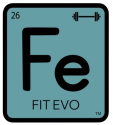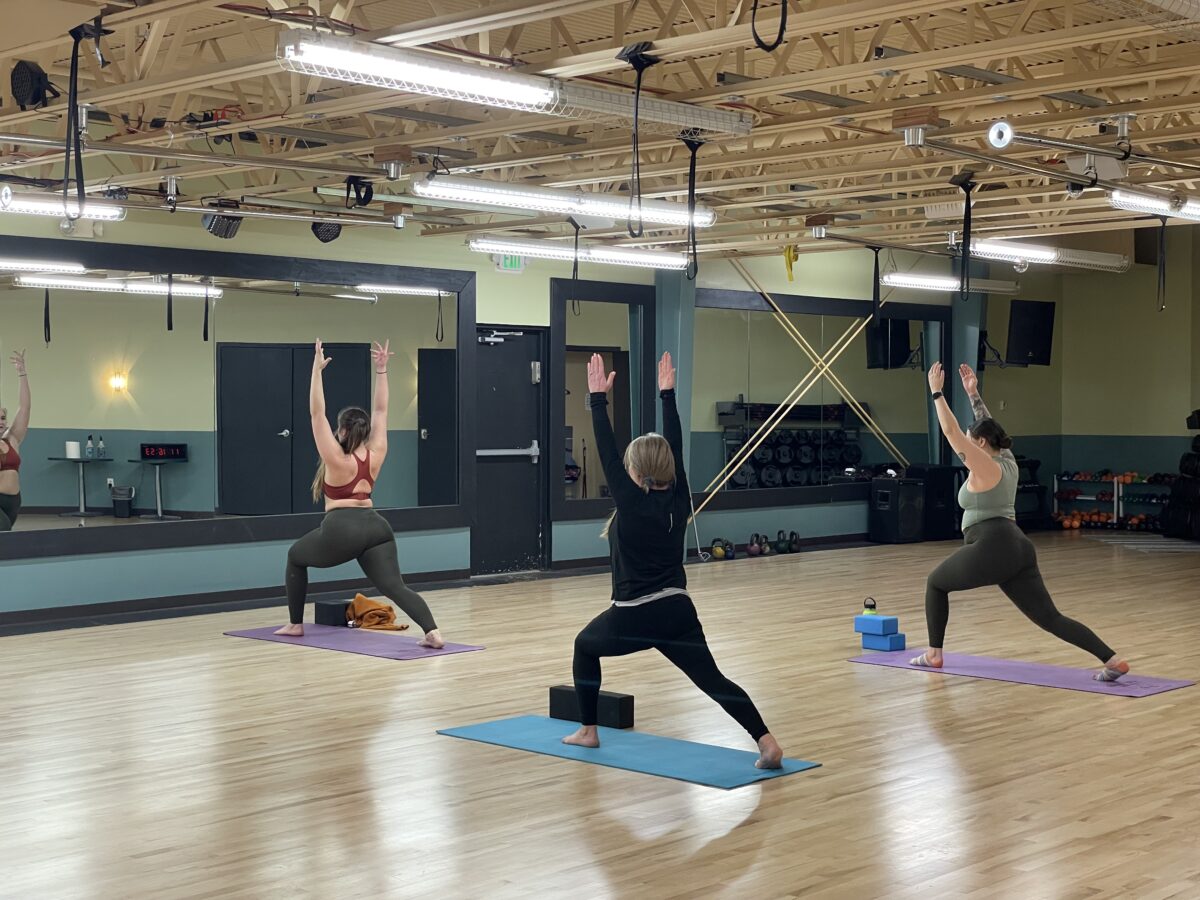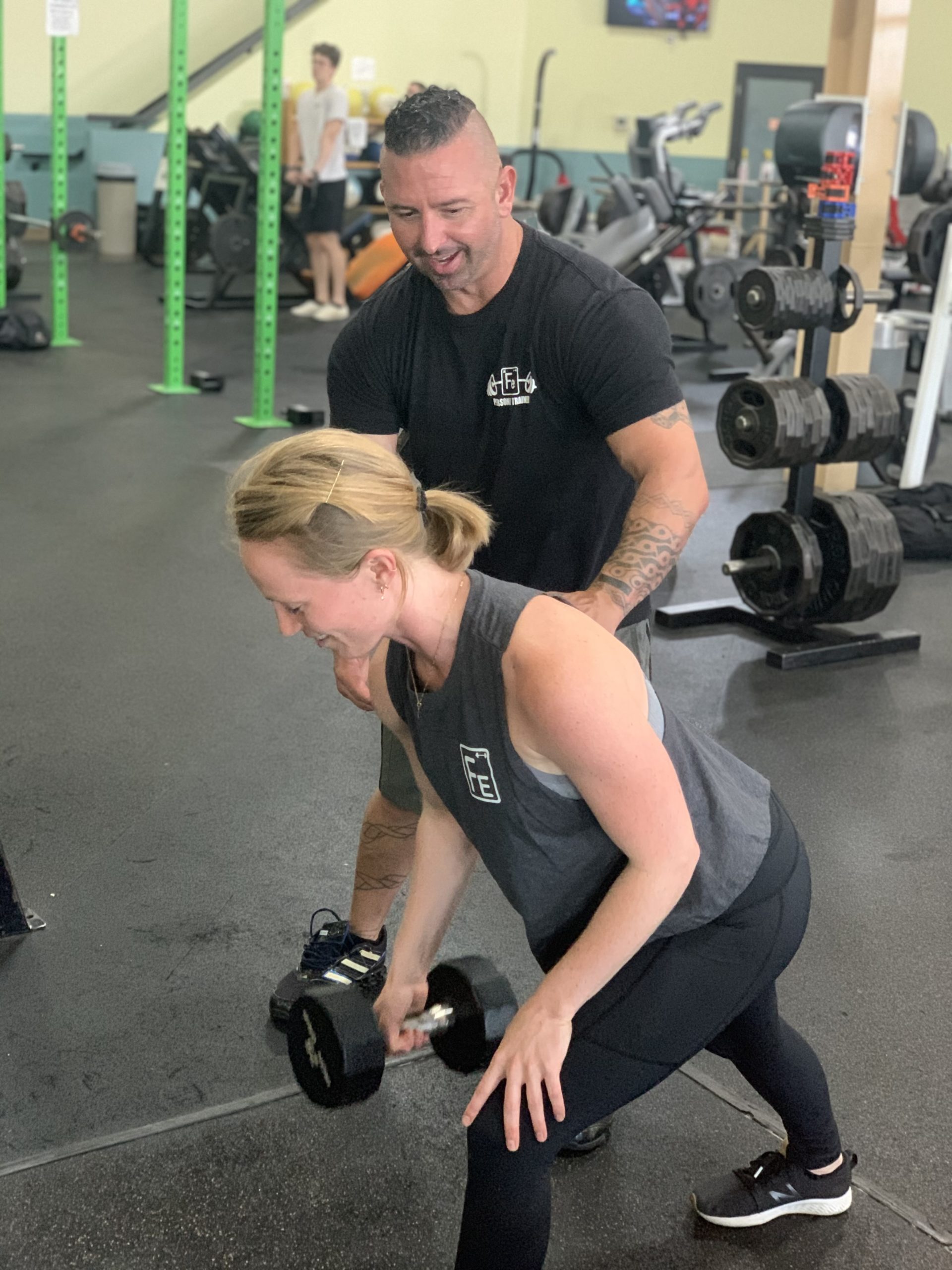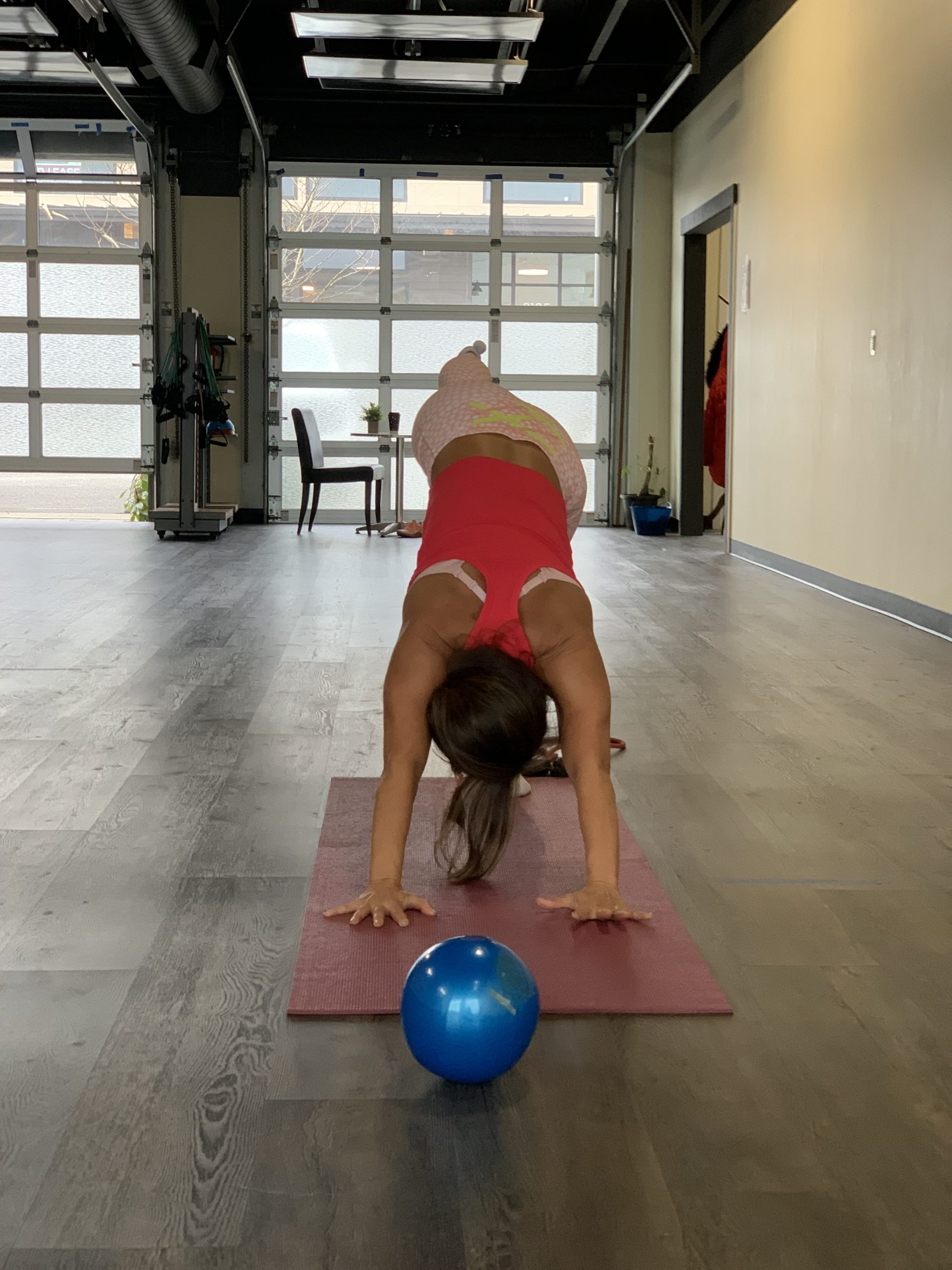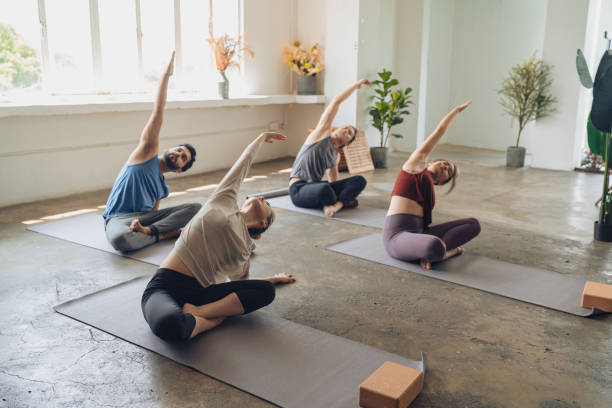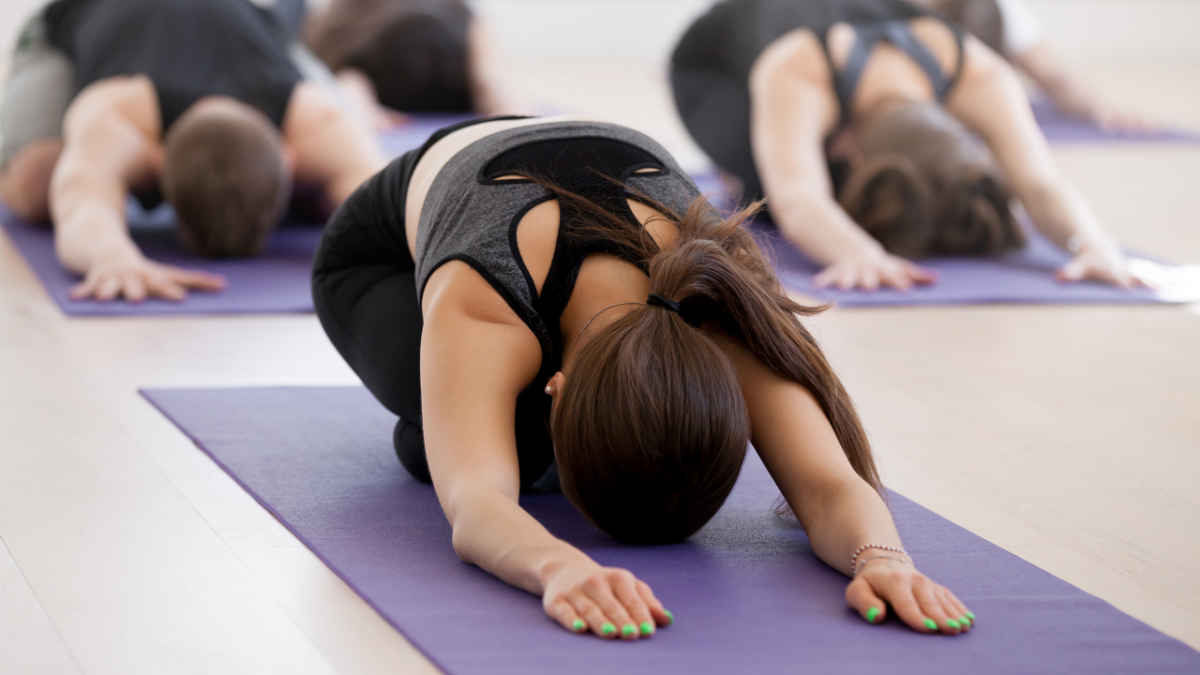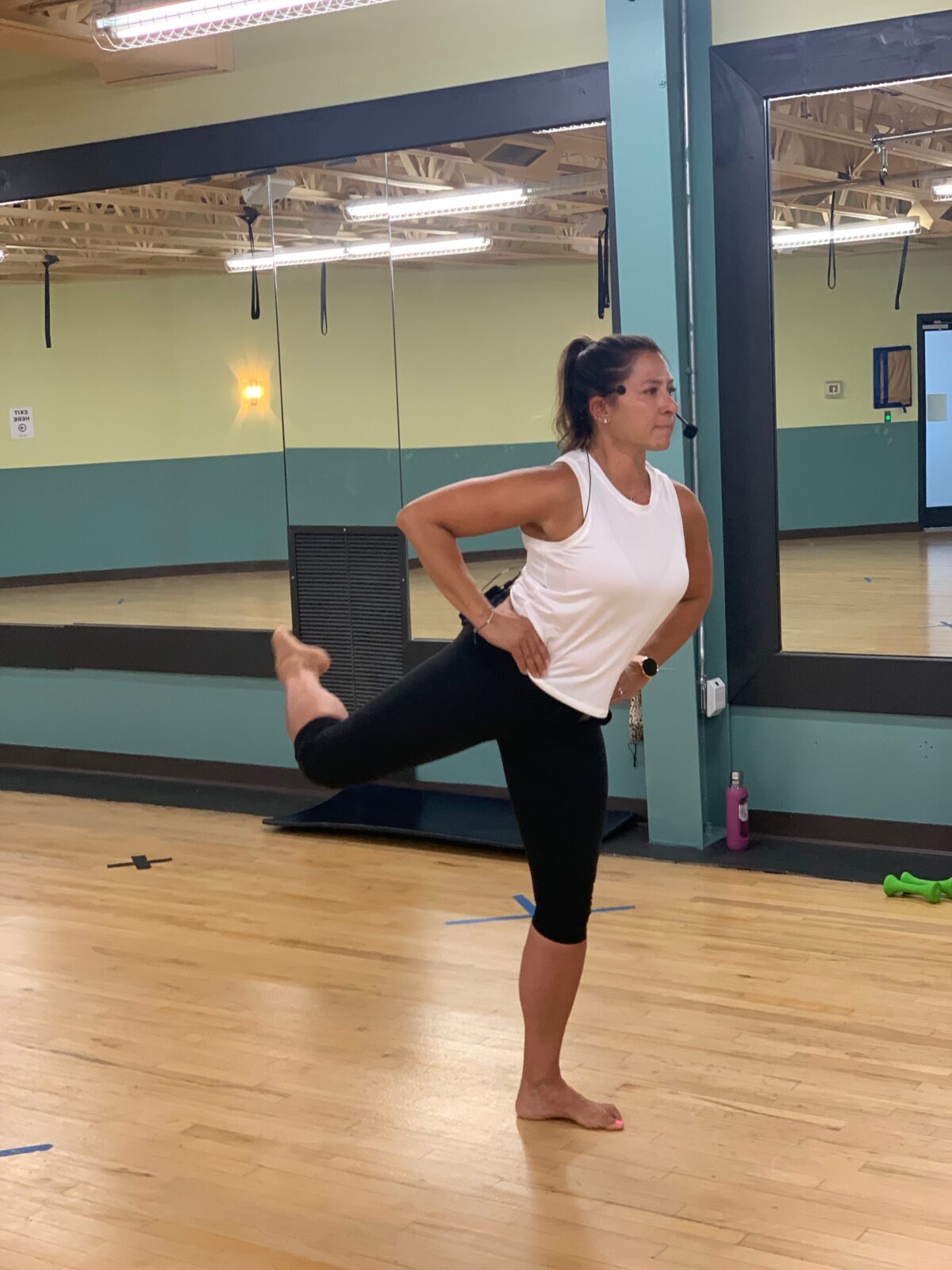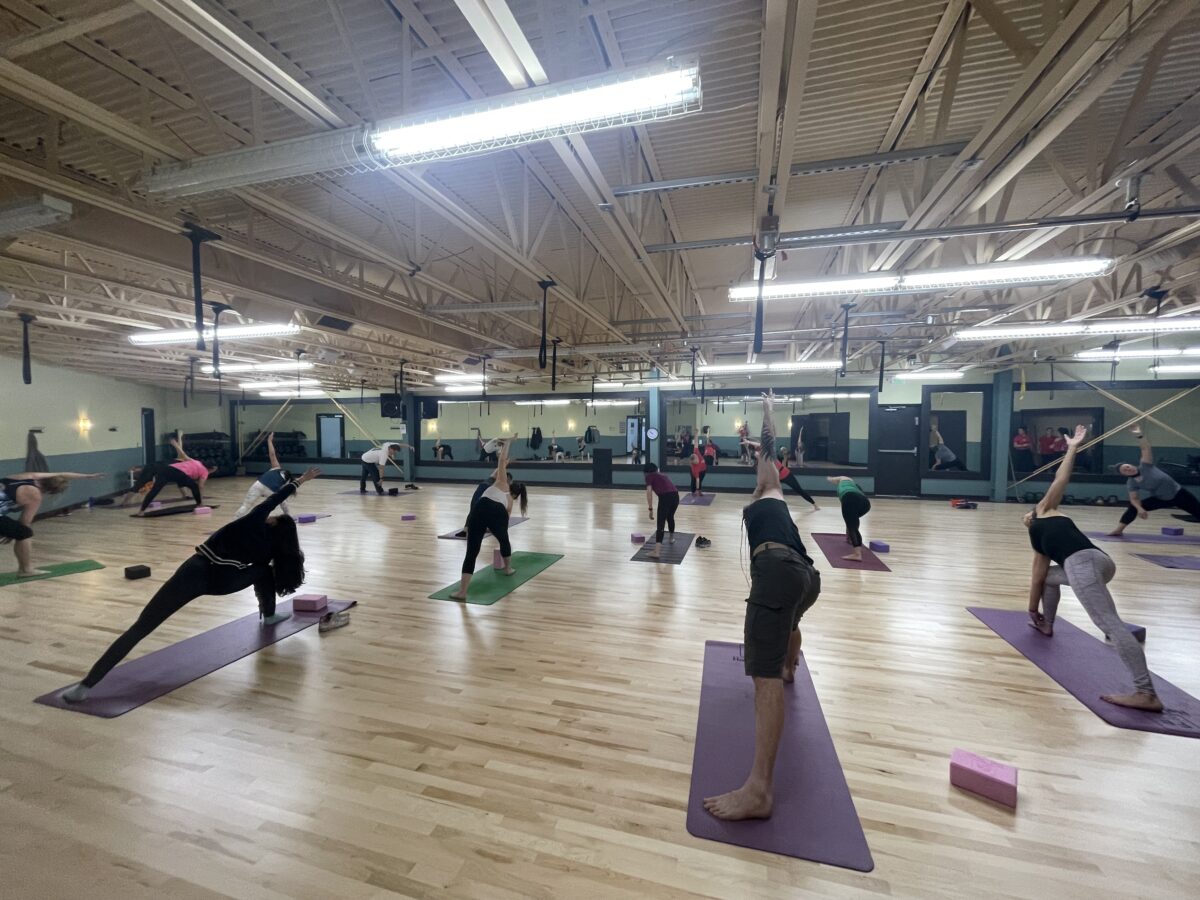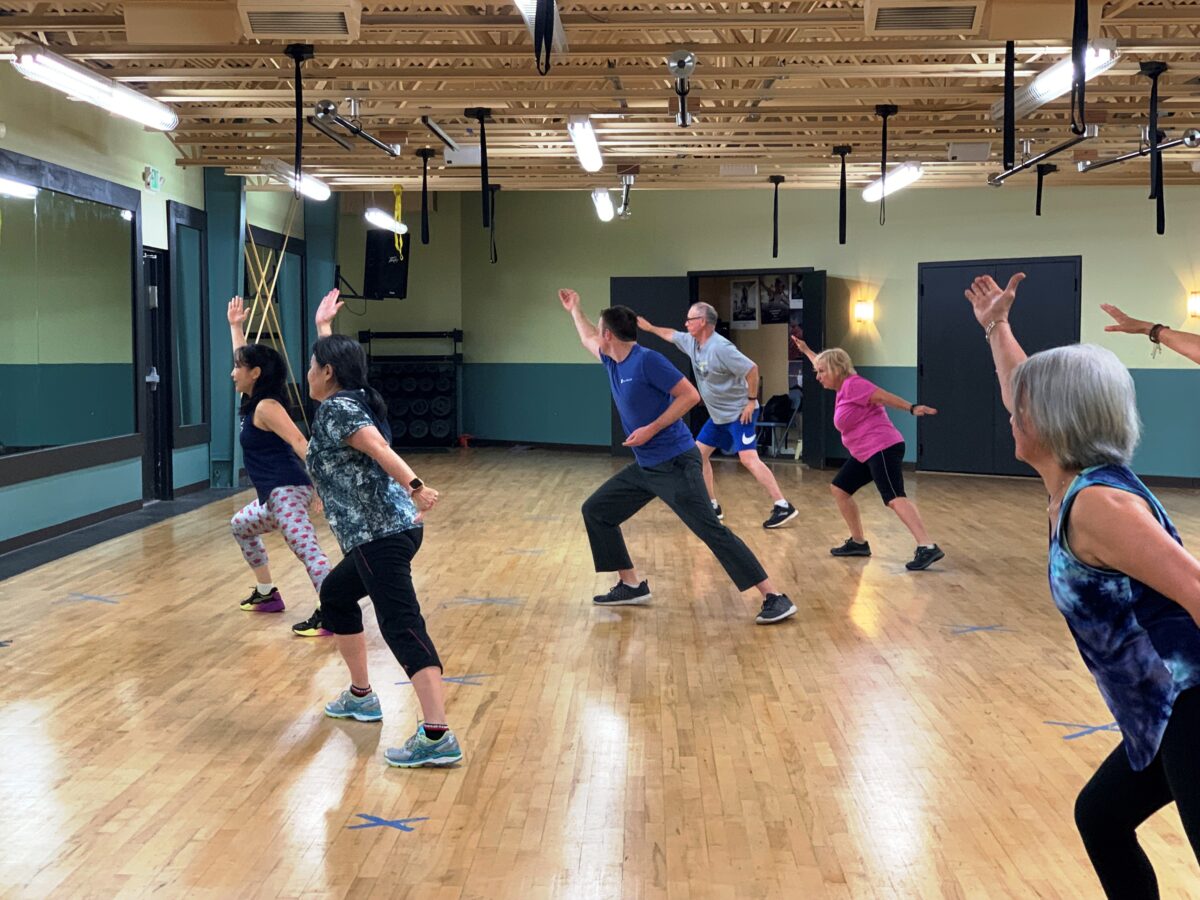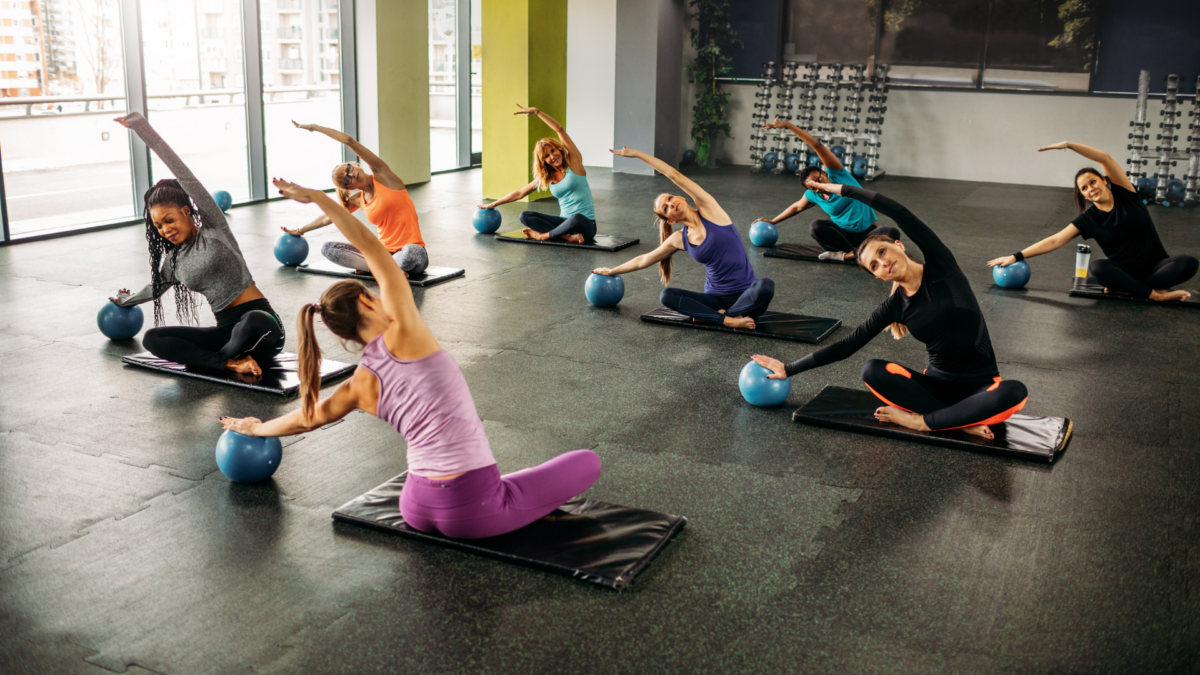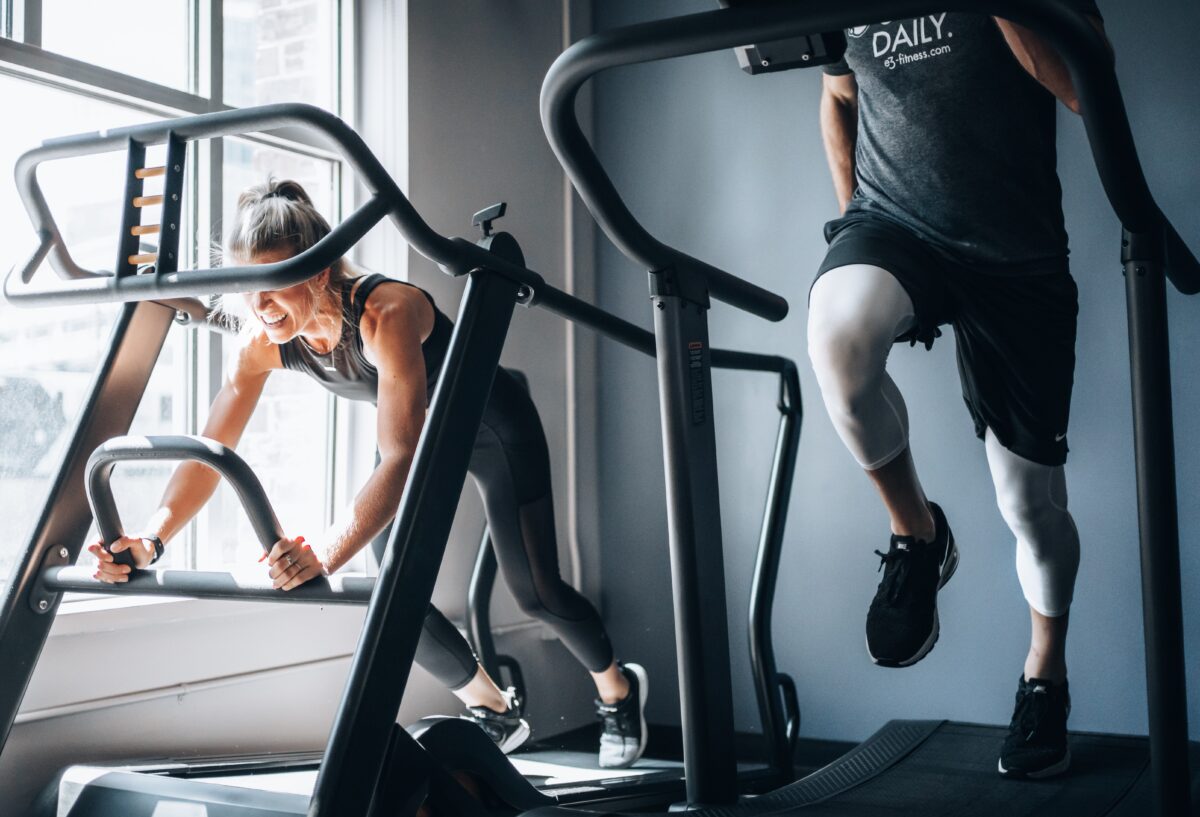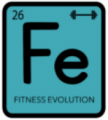Did you know that meditation and yogic breathing are the most important things to do during yoga? These practices are done without even thinking and are essential for a well-rounded practice. Whether you’re practicing Iyengar or any other style of yoga, incorporating meditation and yogic breathing into your asana practice can greatly enhance your overall experience.
The foundation of Iyengar yoga practice lies in the simple act of taking deep breaths during meditation and asana. But here’s the shocking part: many people underestimate the power of proper breathing techniques during their yoga workout and meditation practice. Whether it’s practicing yoga, engaging in meditation, or experiencing the relaxation of yoga nidra, incorporating these techniques is essential for optimal results.
So, to take your yoga journey to new heights, remember to focus on your breath and practice breathing techniques. Find a knowledgeable teacher who can guide you properly using your shoulders during poses. Don’t skip this important aspect of your practice. Explore different breathing exercises and techniques to enhance your experience in yoga classes.
Discover the profound impact of yoga philosophy on your practice and find a knowledgeable teacher to guide you through the journey. Don’t let back pain hold you back from fully enjoying your yoga practice. Get ready to unlock the transformative power of each deep breath.
What Are The Benefits of Yoga Breathing?
The Significance of Proper Breath Control in Yoga Practice

Proper breath control is essential for any yoga practice, as it helps teachers guide their classes back to a state of calm and balance. A yoga class can help improve your back and optimize energy flow throughout the body. It goes beyond simply inhaling and exhaling; it is about consciously directing the breath during classes.
Correct Breath Control Optimizes Energy Flow Throughout the Body
When we focus on our breath during yoga classes, we tap into a powerful source of energy within us that can help with back pain. Deep, intentional breathing helps to circulate prana, the life force that flows through our bodies and supports a healthy back.
Regular classes can further enhance the benefits of this practice. By consciously directing our breath, we can ensure that this vital energy reaches every corner of our being, including our back. This can help us in our classes.
Focusing on the Breath Calms the Mind and Reduces Stress
In today’s fast-paced world, stress has become all too common. Taking a deep breath can help bring you back to a calm state. Attending meditation classes can also assist in managing stress.
However, when we bring our attention back to the rhythm of our breath during yoga classes, something magical happens: the mind begins to quiet down. By taking a deep breath and synchronizing movement with inhalation and exhalation in our back classes, stress melts away, leaving us more centered and at peace.
Controlled Breathing Enhances Endurance During Challenging Poses
Yoga classes can be physically demanding, pushing us outside our comfort zones with challenging poses. But with proper breath control, we can increase our endurance and stay present in these challenging moments.
In our minds, we know that taking classes can help us develop this skill. By maintaining a steady and controlled breath pattern even when faced with difficulty in yoga classes, we tap into an inner reserve of strength that allows us to hold poses for longer periods and prevent back pain.
Conscious Inhalation and Exhalation Deepen Stretches and Increase Body Awareness in Back Classes
Have you ever noticed how your body responds differently when inhaling deeply or exhaling? It’s especially noticeable in your back during yoga classes. Conscious breathing helps us relax and allows for deeper stretches during yoga practice in back classes.
Our yoga classes focus on expanding the body as we inhale and sinking deeper into stretches as we exhale. This helps to release tension in tight areas of the body and brings us back to a state of balance. This heightened body awareness leads to a more profound connection between the mind and body, especially when practicing back classes.
Focusing on Alignment: A Key Element for an Effective Yoga Practice
Proper alignment is crucial for a successful yoga practice that focuses on strengthening the back and attending classes regularly. Taking classes goes beyond simply assuming the correct posture; it involves focusing on every aspect of your body and mind to ensure optimal positioning and energy flow.
Preventing Injuries and Maximizing Benefits
One of the primary reasons alignment takes center stage in yoga classes is its ability to prevent injuries while maximizing the benefits of each pose. When you align your body correctly, you create a strong foundation that supports your movements, reducing the risk of strains or sprains. Paying attention to proper alignment protects vulnerable joints such as the wrists, knees, and shoulders from unnecessary stress.
Moreover, aligning your body optimizes energy flow throughout each pose. Just like a river needs unobstructed channels to flow smoothly, our bodies require open pathways for prana (life force) to circulate freely. Proper alignment ensures that energy moves effortlessly through our muscles, organs, and chakras, allowing us to experience deeper sensations and reap greater rewards from our practice.
Cultivating Strength, Stability, and Flexibility
Mindful alignment prevents injuries and cultivates strength, stability, and flexibility in our bodies. When we focus on aligning ourselves correctly in each pose, we engage specific muscle groups effectively. This engagement builds strength over time as these muscles are challenged consistently.
Alignment also enhances stability by improving our balance within poses. By finding equilibrium between opposing forces in our bodies—such as grounding through our feet while reaching upwards with our arms—we develop greater stability both physically and mentally.
Proper alignment encourages flexibility by targeting areas that tend to be tight or restricted. By consciously adjusting our position within a pose to achieve optimal alignment—using props like blocks or straps when necessary—we can gradually release tension and increase our range of motion.
Improving Posture on and Off the Mat
The benefits of focusing on alignment extend beyond the yoga mat, positively impacting our posture in everyday life. As we become more aware of our body’s positioning during practice, we develop a heightened sense of alignment that carries over into our daily activities.
Maintaining proper alignment during yoga trains us to sit, stand, and move with better posture throughout the day. In addition to improving our physical appearance, this improved posture promotes spinal health and lowers the risk of chronic pain due to improper alignment.
Cultivating Mindfulness: The Core Aspect of Yoga
Practicing yoga goes beyond the physical postures and stretches on the mat. It encompasses a holistic approach that nourishes both the body and mind. One may wonder, “What is the most important thing during yoga?” The answer lies in cultivating mindfulness. Let’s explore how mindfulness is the core aspect of yoga practice and its profound impact on our overall well-being.
Bringing Awareness to the Present Moment
Mindfulness is about being fully present in each moment without judgment or attachment. During a yoga session, practicing mindfulness lets us bring our attention to the present moment, letting go of worries about the past or future. We develop a deep sense of awareness by focusing on our breath, sensations in our body, and the alignment of each asana (pose).
Deeper Connection with Oneself During Yoga
When we cultivate mindfulness in our yoga practice, we create an opportunity for a deeper connection with ourselves. We can observe them without judgment by being fully present and attentive to our bodies, thoughts, and emotions. This self-awareness helps us understand ourselves better and promotes self-acceptance.
Fostering Self-Reflection, Self-Discovery, and Personal Growth
Mindfulness in yoga opens up space for self-reflection and self-discovery. As we become more aware of our inner experiences during practice—such as thinking patterns or emotional reactions—we gain insights into ourselves. This process of self-reflection allows us to identify areas for personal growth and transformation.
Incorporating meditation into our yoga routine strengthens mindfulness further. Taking moments of stillness on the mat enables us to observe our minds more closely—the constant stream of thoughts that often distracts us from being present. We train our minds to remain centered and focused through meditation practices like focused breathing or mantra repetition.
Extending Mindfulness Beyond the Mat
The beauty of cultivating mindfulness during yoga is that it extends beyond the mat into our daily lives. The skills we develop through mindful yoga—such as being present, observing without judgment, and self-reflection—naturally spill over into our everyday experiences. We become more attuned to ourselves and others, enhancing our relationships and interactions.
Mindfulness in daily life promotes overall well-being by reducing stress, improving focus, and fostering a sense of calm amidst the chaos. It allows us to approach challenges with greater clarity and resilience. Whether sitting at a desk in Bellingham, Washington or going about our day in any other location, mindfulness becomes an anchor that helps us navigate life’s ups and downs.
Enhancing Flexibility, Strength, and Balance Through a Daily Yoga Routine
Regular yoga practice is known to offer numerous benefits, including increased flexibility, strength, and balance. By incorporating a daily yoga routine into your life, you can experience remarkable improvements in these areas over time. Let’s explore how yoga helps enhance flexibility, build strength without bulkiness or strain, and improve stability physically and mentally.
Increasing Flexibility Through Gradual Muscle Stretching
One of the most important aspects of yoga is its ability to increase flexibility by gradually stretching muscles. You can target different muscle groups in your body through various yoga poses and sequences, allowing them to lengthen and become more supple. Regular stretching improves joint mobility and reduces muscle stiffness and tension.
Yoga routines often include stretches focusing on specific areas, such as the hips or hamstrings. Poses like forward folds or pigeon poses gently stretch these tight areas, promoting greater flexibility with each practice session. Over time, you’ll notice an increased range of motion in your joints and improved overall flexibility.
Building Strength with Yoga Poses
Contrary to popular belief, yoga is not just about flexibility; it also helps build strength without adding bulk or strain to your muscles. Many yoga poses require engaging multiple muscle groups simultaneously, leading to improved muscle tone throughout the body.
Poses like plank or warrior pose engage the core muscles, arms, and legs. Holding these poses for longer durations challenges the muscles and increases their endurance. Inversions such as headstands or handstands help strengthen the upper body while improving balance.
By consistently practicing these strengthening poses in your daily yoga routine, you’ll develop lean muscle mass that supports overall physical fitness without sacrificing flexibility.
Improving Stability Physically and Mentally Through Balancing Postures
Balancing postures is integral to any yoga practice, as they help improve physical stability and mental focus. These poses require concentration, coordination, and the engagement of various muscle groups to maintain balance.
Yoga styles like Ashtanga yoga or Vinyasa flow often incorporate balancing postures into their sequences. Poses such as tree pose, or eagle pose challenge your stability while strengthening your legs and core muscles. With regular practice, you’ll notice an improvement in your ability to hold these poses for longer periods and maintain a steady mind-body connection.
Enhancing stability through balancing postures benefits physical performance and cultivates mental resilience and focus. The ability to find balance on the mat can translate into increased stability off the mat, helping you navigate challenges with grace and composure.
Understanding the Physical and Mental Benefits of Regular Yoga Practice
Regular yoga practice offers a multitude of benefits for both our physical and mental health. From improving cardiovascular health to reducing anxiety levels, the advantages of incorporating yoga into our daily routines are numerous. Let’s explore some of the key benefits of engaging in this ancient practice.
Improved Cardiovascular Health
One of the most important things about yoga is its positive impact on cardiovascular health. Through various poses, breathing exercises, and meditation techniques, yoga helps increase blood circulation throughout the body. This enhanced circulation allows oxygen and vital nutrients to reach all body parts more efficiently, promoting overall heart health.
Boosted Immune System Function
Another significant benefit of regular yoga practice is a boost to our immune system’s function. By reducing stress levels, which can weaken our immune system, yoga helps fortify our body’s defense mechanisms. The mindful movements and focused breathing techniques incorporated into yoga help calm the mind and reduce anxiety levels, ultimately benefiting our mental well-being.
Relieved Muscle Tension and Improved Joint Mobility
Yoga also plays a crucial role in releasing muscle tension while improving joint mobility. The physical practice of yoga involves stretching and holding different poses that target specific muscle groups. These movements help relax tight muscles while increasing flexibility and range of motion in joints. Whether you’re experiencing muscle stiffness from sitting at a desk all day or looking to enhance your athletic performance, regular yoga practice can be highly beneficial.
Reduced Anxiety Levels and Improved Focus
In addition to its physical benefits, practicing yoga has numerous positive effects on mental health. One notable advantage is its ability to reduce anxiety levels. Engaging in mindful movement combined with deep breathing exercises helps activate the body’s relaxation response, decreasing feelings of stress and anxiety.
Moreover, regular yoga practice enhances focus and concentration abilities. We cultivate a heightened sense of awareness and mindfulness as we move through different poses while synchronizing breath with movement. This increased mental clarity can positively impact our daily lives, improving productivity and overall cognitive function.
Developing Self-Awareness and Inner Peace Through Consistent Yoga Practice
Yoga is not just a physical exercise but a holistic practice encompassing the mind, body, and spirit. Developing self-awareness and inner peace stand out as crucial aspects. Through consistent yoga practice, individuals can embark on a transformative journey towards self-discovery and inner harmony.
Yoga Encourages Self-Reflection, Leading to Greater Self-Awareness
One of the fundamental principles of yoga is self-reflection. As students engage in various yoga asanas (poses) and pranayama (breathing exercises), they are encouraged to turn their attention inward. This redirection of focus allows them to observe their thoughts, emotions, and physical sensations without judgment or attachment.
Regularly practicing yoga in Bellingham, Washington, or anywhere else, individuals become more attuned to their bodies and minds. They develop an increased awareness of their strengths, limitations, patterns of behavior, and thought processes. This heightened self-awareness extends beyond the mat into everyday life situations.
Consistent Practice Helps Release Emotional Blockages and Promotes Inner Peace
Through regular yoga practice in Bellingham, WA, or any other location where one practices yoga, individuals can effectively release emotional blockages that may have accumulated over time. As they move through different poses and engage in deep breathing exercises like yoga nidra (yogic sleep), they create space within themselves for emotional healing.
Research has shown that practicing yoga can profoundly affect mental health by reducing stress levels and alleviating symptoms of anxiety disorders. By cultivating mindfulness during each session, practitioners learn to let go of negative emotions and embrace a sense of calmness within themselves.
Yoga Cultivates a Sense of Acceptance, Compassion, and Gratitude Towards Oneself and Others
As individuals delve deeper into their regular yoga practice journey in Bellingham or elsewhere, they cultivate acceptance, compassion, and gratitude. Yoga teaches us to embrace our bodies and minds as they are in the present moment, without comparison or judgment.
Practicing yoga consistently, students develop a compassionate attitude towards themselves and others. They learn to appreciate their own unique journey and respect the individual paths of those around them. This sense of interconnectedness fosters a deeper sense of inner peace and harmony.
Regular Yoga Practice Allows for Personal Growth and Transformation
Yoga is not just about physical flexibility but also mental and spiritual growth. Through regular practice, individuals can witness their own progress and evolution over time. As they challenge themselves with new poses or delve into more advanced practices like meditation or pranayama techniques, they experience personal breakthroughs.
The transformative power of yoga lies in its ability to help individuals connect with their true selves on a profound level. It provides a platform for self-discovery, self-acceptance, and self-love.
Embracing the Power of Yoga for Overall Well-Being
Yoga is a holistic practice encompassing physical, mental, and emotional well-being. It goes beyond just a workout routine and delves into self-care and self-discovery. Yoga promotes overall health in various aspects of life by integrating breath, movement, and mindfulness.
Physical Well-being: Strengthening the Body
One of the most important things to do during yoga is to focus on the physical aspect. Individuals can explore postures that challenge their bodies while finding ease within them through different styles such as Hatha, Iyengar, or hot yoga. The practice helps build strength, flexibility, and balance. Whether holding a challenging pose or engaging in a dynamic flow sequence, each movement enhances physical fitness.
Mental Well-being: Calming the Mind
Yoga philosophy emphasizes the importance of finding inner peace through mindfulness. By connecting with our breath and being present in each moment on the mat, we cultivate tranquility beyond our practice sessions. Regularly engaging in yoga can reduce anxiety levels and promote better sleep patterns. It provides an alternative treatment for those seeking natural ways to manage stress and improve their mental well-being.
Emotional Well-being: Nurturing Self-Love
In addition to physical and mental benefits, practicing yoga cultivates emotional well-being by encouraging self-love and care. Yoga empowers individuals to listen to their bodies’ needs while respecting personal boundaries on the mat. It teaches us to be gentle with ourselves while navigating life’s challenges. By embracing yoga as a lifestyle choice rather than just an exercise routine, we nourish our emotional selves and develop resilience when facing difficulties.
Holistic Approach: Balancing Life
The most important thing about yoga is recognizing its potential for supporting a balanced lifestyle. Incorporating regular yoga sessions into our daily routines allows us to create space for self-reflection and introspection. It grants us an opportunity to pause, breathe, and reconnect with our inner selves amidst the busyness of life. By embracing yoga as a holistic practice, we can find harmony between work, relationships, and personal growth.
Empowerment: Taking Charge of Well-Being
Yoga empowers individuals to take charge of their well-being on all levels. It encourages us to explore our bodies’ capabilities while respecting their limitations. Restorative yoga teaches us to slow down and listen to what our bodies truly need. By placing palms on the mat in a child’s pose or finding stillness in savasana, we nurture ourselves from within.
The Bottom Line: What is the Most Important Thing During Yoga?
Several key elements contribute to a fulfilling and effective experience. Proper breath control is the foundation for your practice, allowing you to connect with your body and find balance. Focusing on alignment ensures that you perform the poses correctly, preventing injuries and maximizing the benefits of each posture.
Cultivating mindfulness allows you to be fully present in the moment, enhancing your mind-body connection and deepening your practice. Incorporating a daily routine helps improve flexibility, strength, and balance over time. Regular yoga practice brings physical benefits and promotes mental well-being by fostering self-awareness and inner peace.
Now that you understand the importance of these elements in yoga practice, it’s time to take action! Start by incorporating these principles into your next session. Pay attention to your breath, properly align your body in each pose, and cultivate mindfulness. Remember that consistency is key; make yoga a part of your daily routine to experience its transformative effects on your body and mind.
